Diving with the Oris AquisPro Date Calibre 400
Testing Oris’ strongest dive watch where it belongs

Dive watches today come in all shapes and sizes, each trying to find its place in a very crowded market. Some are meant to evoke a sense of nostalgia, for the days of yore when a dive watch, a single tank, and a thirst for adventure was all you needed. Some attempt to be that one single watch, straddling the line between toolish utility and stylish dressiness. From the boardroom to the beach and all that. Others, still, strive to bring the function of the dive watch into the 21st century with high tech materials and engineering and keep it relevant as a necessary tool of the modern scuba diver. The Oris AquisPro Date Calibre 400 falls firmly into that latter camp. We are going to take it on a few dives to see how it fares.
The Oris AquisPro
For anyone unfamiliar, Oris is an independent Swiss watchmaking house from Hölstein that have been steadily making watches since 1904. Initially gaining popularity for their Big Crown pilot watches and an 8-day power reserve alarm clock, they moved into dive watches in 1965. Their current lineup consists of the Divers Sixty-Five, a vintage-inspired piece available in many different configurations whose name is a nod back to that first dive watch, and the Aquis line, which is Oris’s take on the modern dive watch.
The watch we’re looking at today is the AquisPro, the alpha of the Aquis pack. Released back in April of 2021, here is a quick recap: The AquisPro is Oris’s professional diving watch. Previously called the ProDiver line, these are watches that are meant to be used as tools and are designed as such. Big, chunky and legible is the name of the game when an instrument needs to withstand pressures and conditions up to 1,000m. I’m not sure if any saturation divers out there are wearing these, but they certainly could if they felt so inclined.
The case is a whopping 49.5mm in diameter, and if that sounds large, it certainly is. It might be the largest watch I have ever put on my dainty, 16cm wrist. If you sense a “but” coming, you’re correct again, and here it is: it somehow doesn’t feel all that much bigger than your standard 42-44mm dive watch. Whether it is the short lug-to-lug distance, making it hug the wrist nicely, or the materials-forward approach applied to the whole watch, it wears quite comfortably on the wrist, much more so than the terrifyingly large numbers on the spec sheet would lead you to believe.
The huge, hockey puck of a case is made of a high grade and very lightweight titanium, then finished with a low-glare, black DLC coating. The result is a comfortable and (relatively) lightweight watch that looks like serious business and borderline menacing. That aesthetic continues on the dial side, with a black, wave-patterned dial, white applied indices at five-minute intervals, and white minute indices around the small inner chapter ring. The namesake date window reveals an unassuming, colour-matched date wheel at 6 o’clock. The thin, fully-lumed sword hands complete the austere, monochrome look. The left side of the case has a recessed, passive helium escape valve, in case you decide to do any casual saturation diving. Moving on to the ceramic bezel, you will find the only splash of colour on the whole package: yellow indices for the first 15 minute markings on the dive bezel. This small accent of colour looks great and gives the watch slightly more menace, bringing to mind a swarm of bees, or a hazard sign, or any number of other serious things.
Let’s talk about the bezel for a moment. It features Oris’s patented Rotation Safety System, known as RSS. In practice, the bezel is fully locked and unable to rotate in either direction, until you pull the grippy locking mechanism that surrounds the bezel up towards you, away from the wrist. There is a sturdy click and just like that the bezel is unlocked, and free to easily rotate counter-clockwise to set the timing function. Once set where you want it, you simply push the whole mechanism back down toward your wrist and the click locks it back into place, unable to be turned, ensuring the safe timing of the dive. As one who has been fortunate enough to dive with many a dive watch over the last few years, this Oris now sits at the top of my list of favourite bezels to use. Many brands have tried many things over the years to provide locks to the bezel to keep divers from accidentally mistiming a dive, from the simple and functional, to the unnecessary and confounding, but this is the first one that I have ever found completely intuitive and seamlessly simple to use. The lock feels like it’s just part of the act of setting the bezel, rather than an annoyance to be dealt with afterwards. The outer ring is just grippy enough to be easily operated with either gloved or bare hands, and once unlocked the bezel has just the right amount of resistance to be easily turned to precisely where you want. I don’t rave about a bezel very often, but this one is just about perfect.
The backside of the watch features a closed caseback with the same DLC-coated titanium, engraved with the Oris logo. This caseback protects another star of this show: The Oris Calibre 400 movement. In case you have been living under a rock for the past year, the Calibre 400 is Oris’s new, in-house movement. This 28,800vph movement boasts improved anti-magnetic properties, a whopping 5 days of power reserve, courtesy of two barrels, and an impressive 10-year warranty and 10-year recommended service interval. It’s only fitting that this movement would be put into service powering Oris’s most high-tech, modern tool watch.
The watch comes fitted on Oris’s integrated rubber strap. It’s a very supple and comfortable rubber and features a folding clasp made of case-matching DLC coated titanium. The strap also features two other Oris innovations. The patented Sliding Sledge is a sliding micro-adjustment, making very fine, on-the-fly adjustments a breeze without removing the watch. Always an appreciated feature. The rubber strap also features the Oris Safety Anchor, a mechanism developed by Oris so that in the event of an unintentional clasp release, two hooks grab the strap so the watch stays safely attached to the wrist. These small quality-of-life details are what can put a strap head and shoulders above the rest.
Unfortunately, this strap is also responsible for my only real complaint about the watch. It’s not really a design flaw, but the strap was simply way too big for me, and its integrated nature meant I could not swap it for something a bit smaller. It worked over a thick wetsuit for diving, but on the bare wrist, even at the tightest clasp setting, there was still probably about 2cm of space between my wrist and the strap, making casually wearing it topside an impossibility. Maybe I am supposed to leave it in the dive bag with all the other tools, or maybe this is Oris’s subtle way of telling me I am too frail for deep-sea activities. Either way, if your wrist is under about 18cm or so, be prepared to add some holes to the rubber strap.
In the water
It’s well known that very few divers are diving with a wristwatch as their sole timing device these days. I can personally recall meeting only one in all my time diving. Being relegated to a backup timing device might take some of the pressure off of the mechanical watch, but you wouldn’t know it from wearing the Oris AquisPro. This thing is one serious piece of dive gear. We took it diving in a natural spring and cavern down in Florida to put it through its real-world paces. Strapping it onto my non-computer wrist, I was struck by how much the watch blends into the modern dive kit. Its monochrome colour scheme looks right at home with most wetsuits, drysuits and buoyancy compensators. With the extra padding of the wetsuit it fits perfectly and hugs the wrist like a glove. No edges or discomfort of any sort.
I think I have gushed enough about the bezel for one lifetime, but setting it before descent is an absolute pleasure. In the freshwater cavern with limited overhead light, the ample Super-LumiNova cuts through the dark murky water, and with the help of the contrast offered by the black dial and case, instantly offers up the data you are after at a glance. As I said above, some vintage-inspired dive watches evoke feelings of the old days of diving when you ponder them underwater, but this one does quite the opposite. Matched with a modern-day diving rig it makes you marvel at the technology and forward-thinking design, and wonder just how far you could take it.
Maybe you don’t need a dive computer after all? Maybe just you and the Oris AquisPro can make it to that 1,000-metre mark? Okay maybe not, but you get my drift. We didn’t reach anywhere near that mark but the AquisPro is a superb diving companion, even at shallower depths. In and out of the water three times at various depths, a few knocks against rocks and the AquisPro doesn’t bat an eye. It serenely stares at me as if to say, “Is that all you’ve got?”
Final thoughts
As a thought exercise, we all sometimes try to imagine what our “one watch” would be, if we were forced to make such a terrible decision. I narrowed it down even more and imagined a hideous world where I am only allowed one watch to take diving from now on. It would be a torturous choice, but as of right now, I think it would be in my best interest to choose the Oris AquisPro, and that’s saying a lot. Available now from Oris for USD 4,600 or EUR 3,900.
More details and orders at oris.ch.

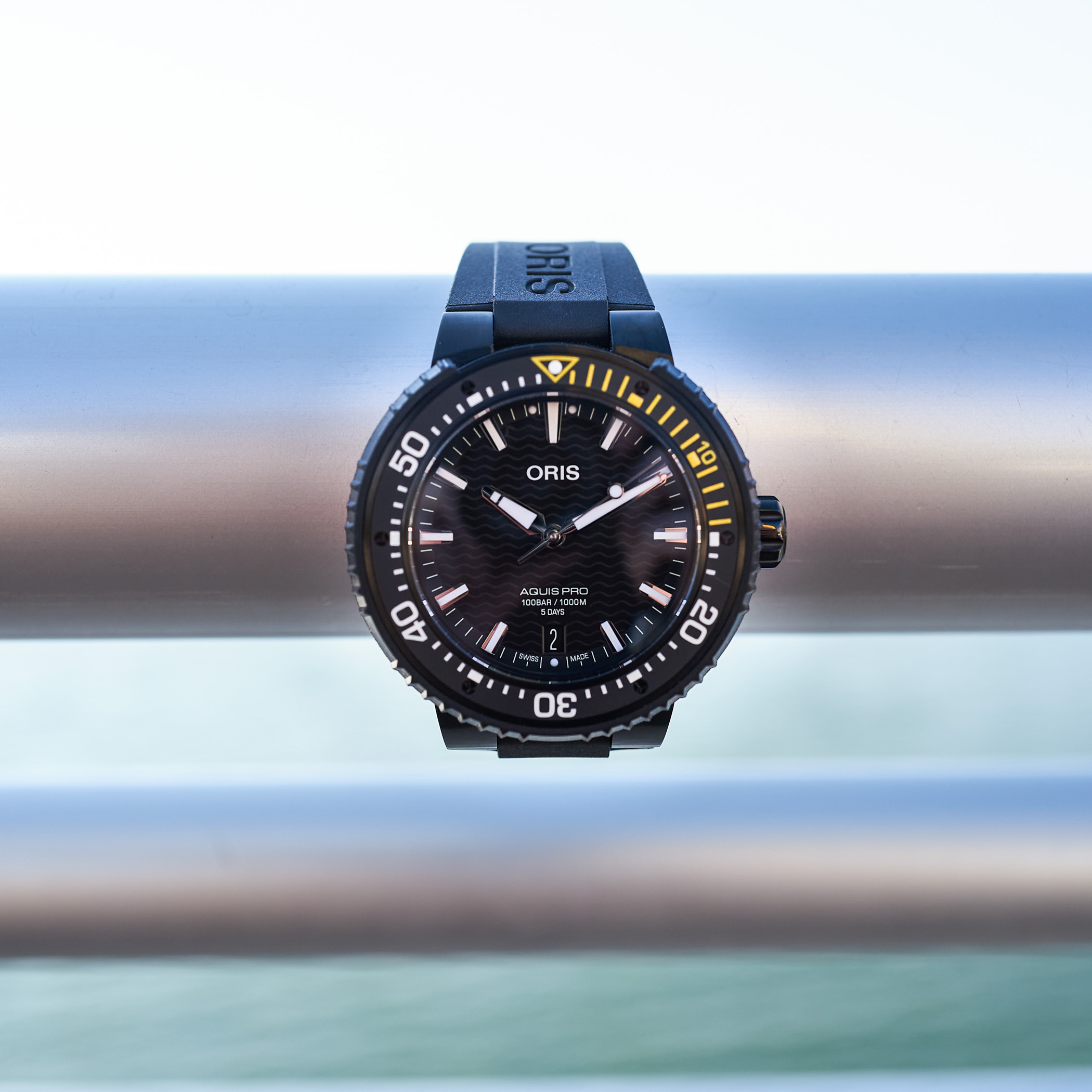
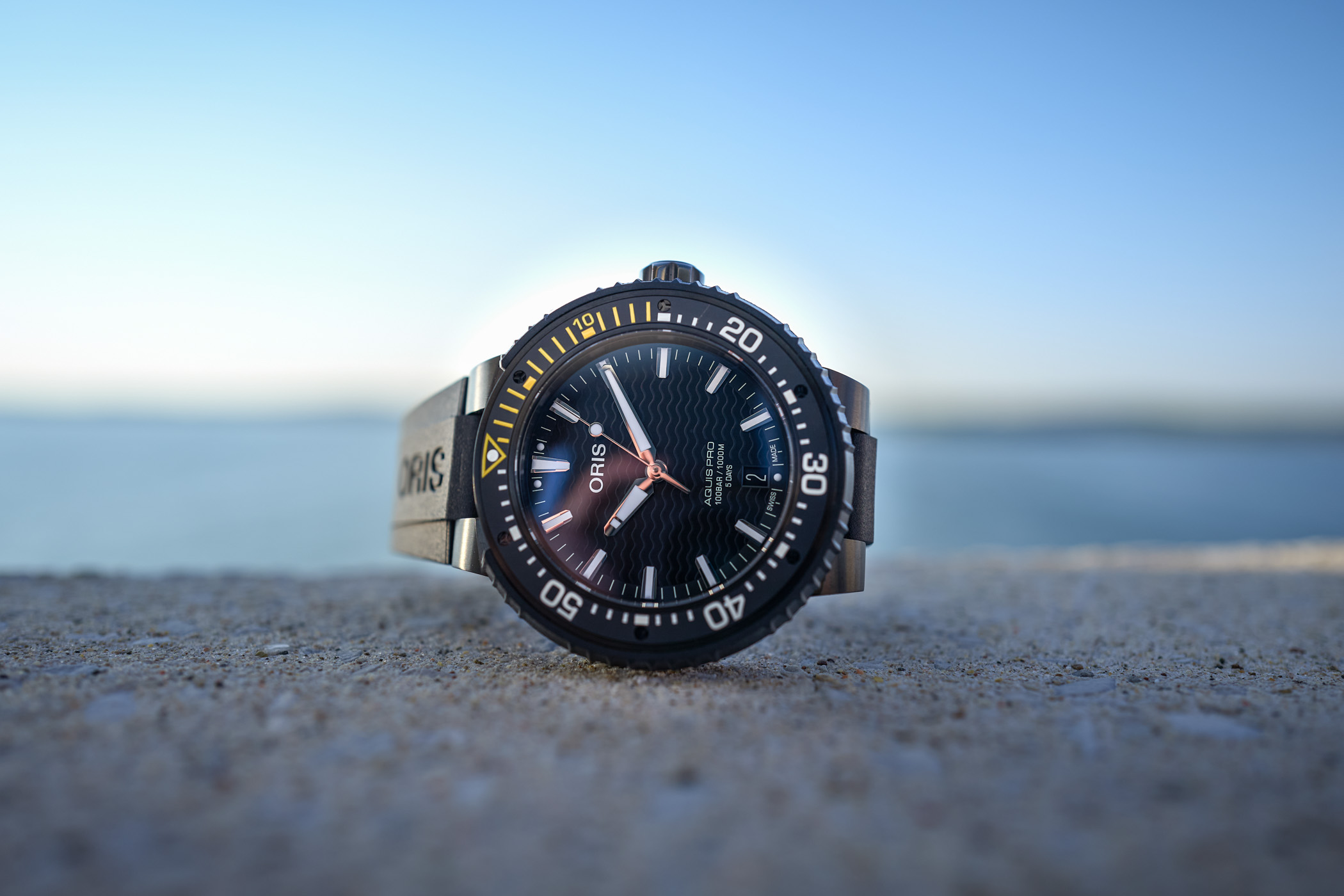
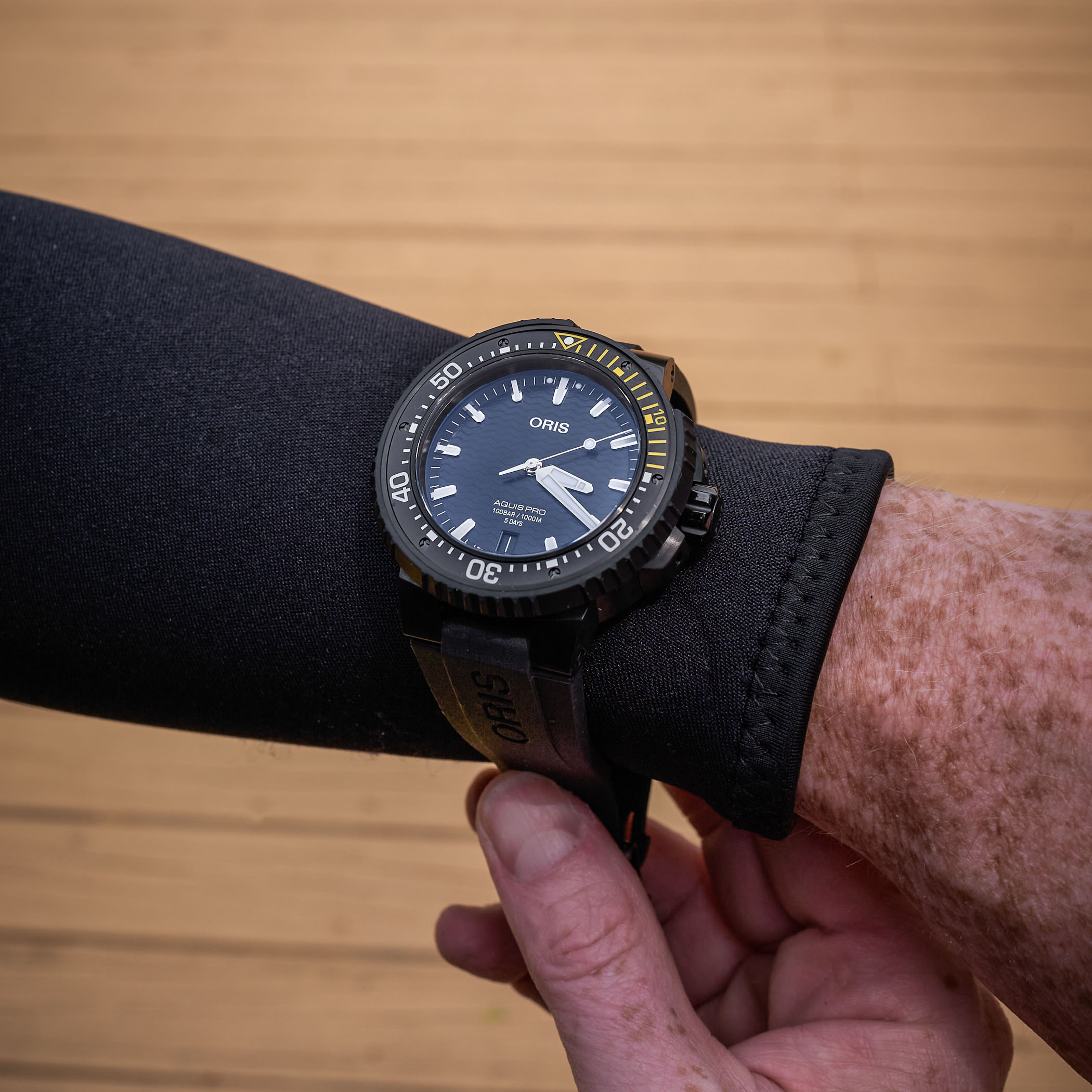
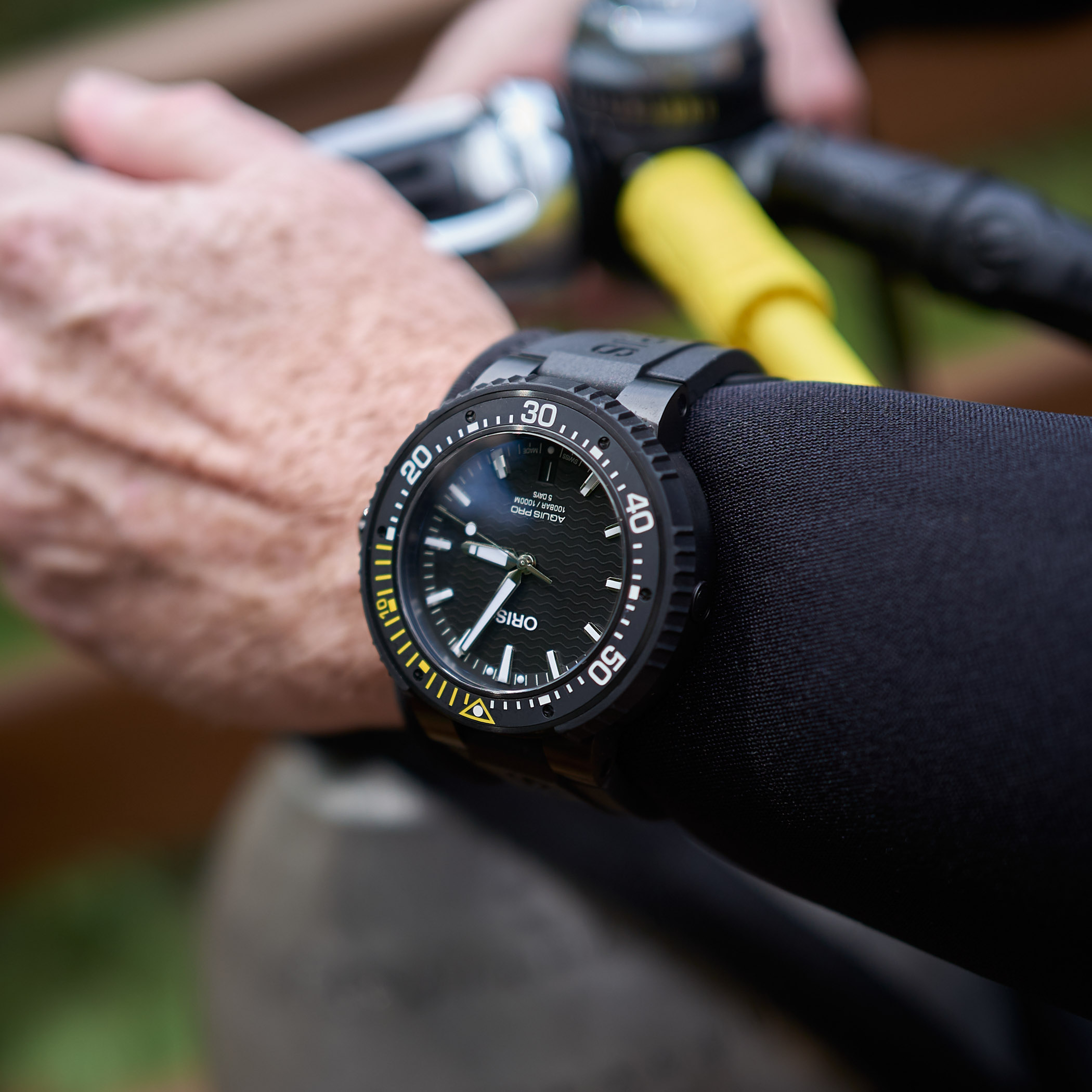
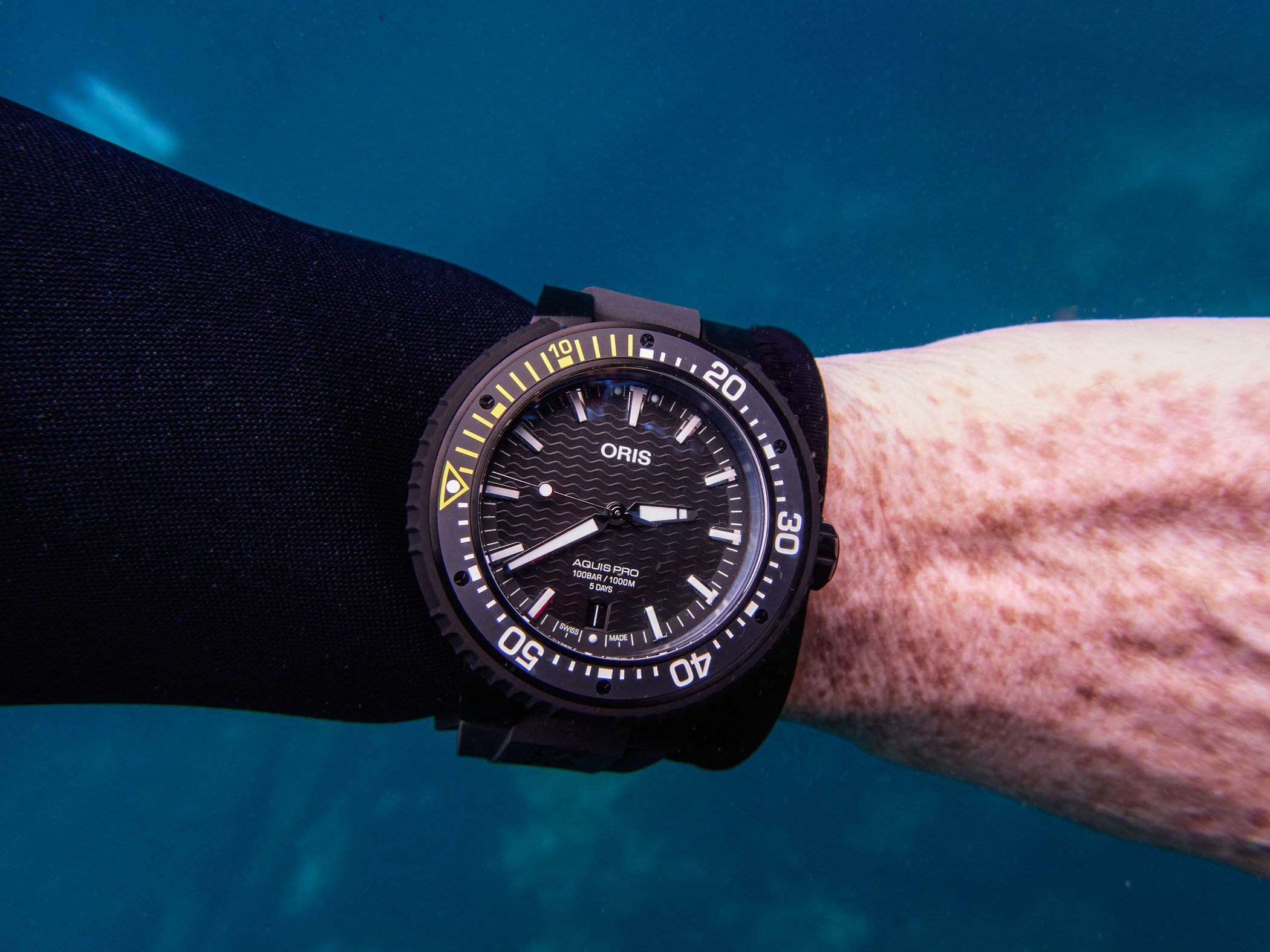
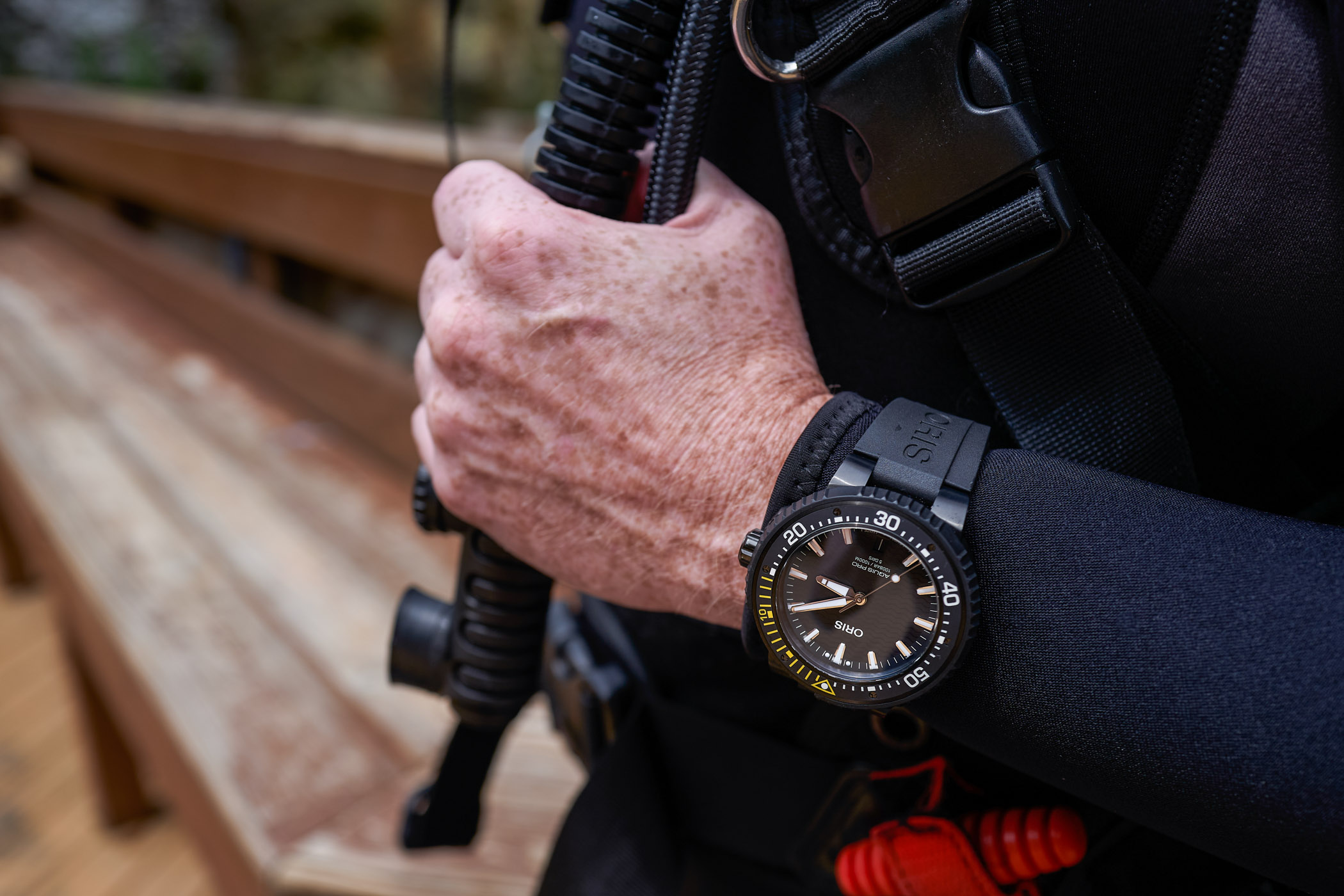
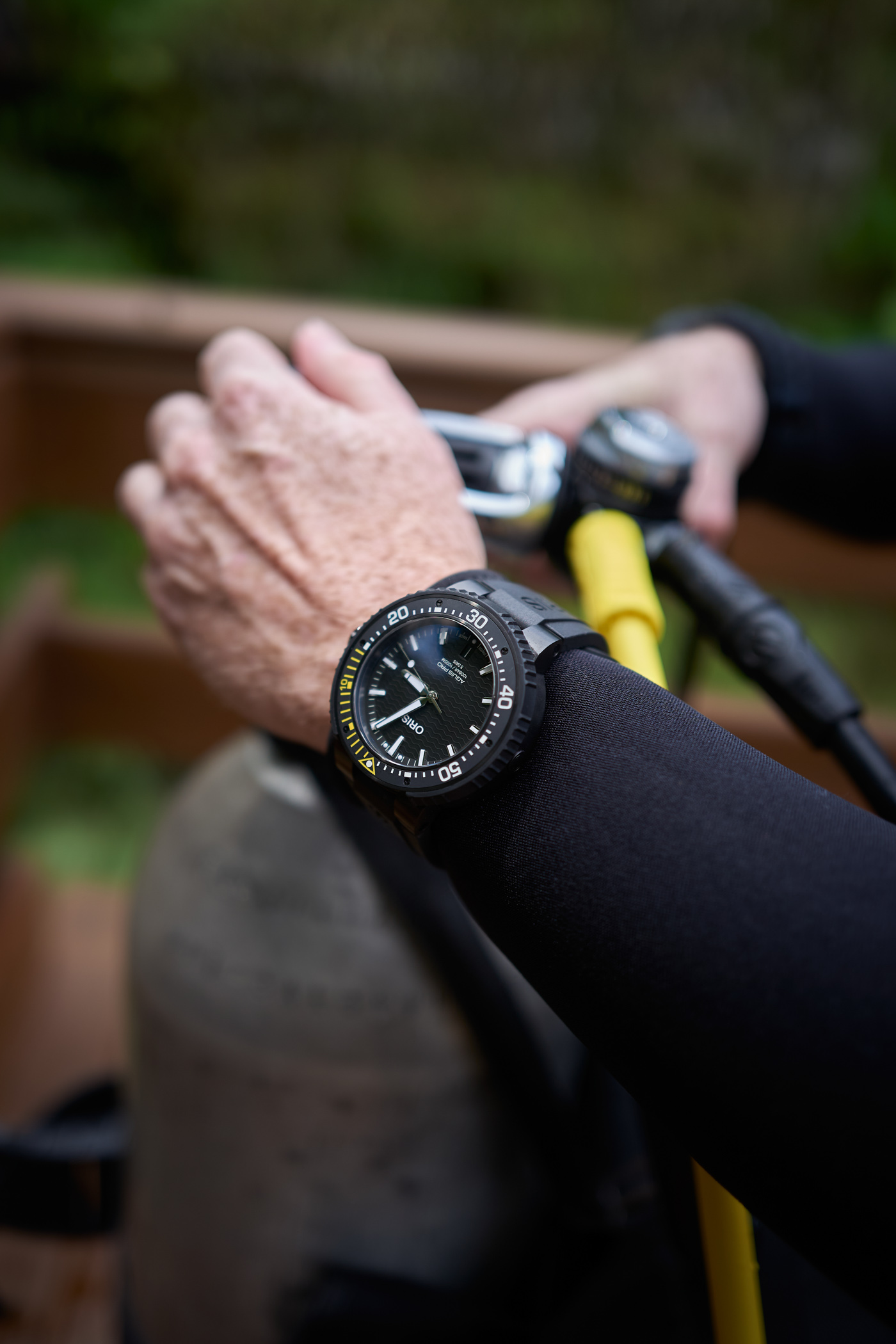

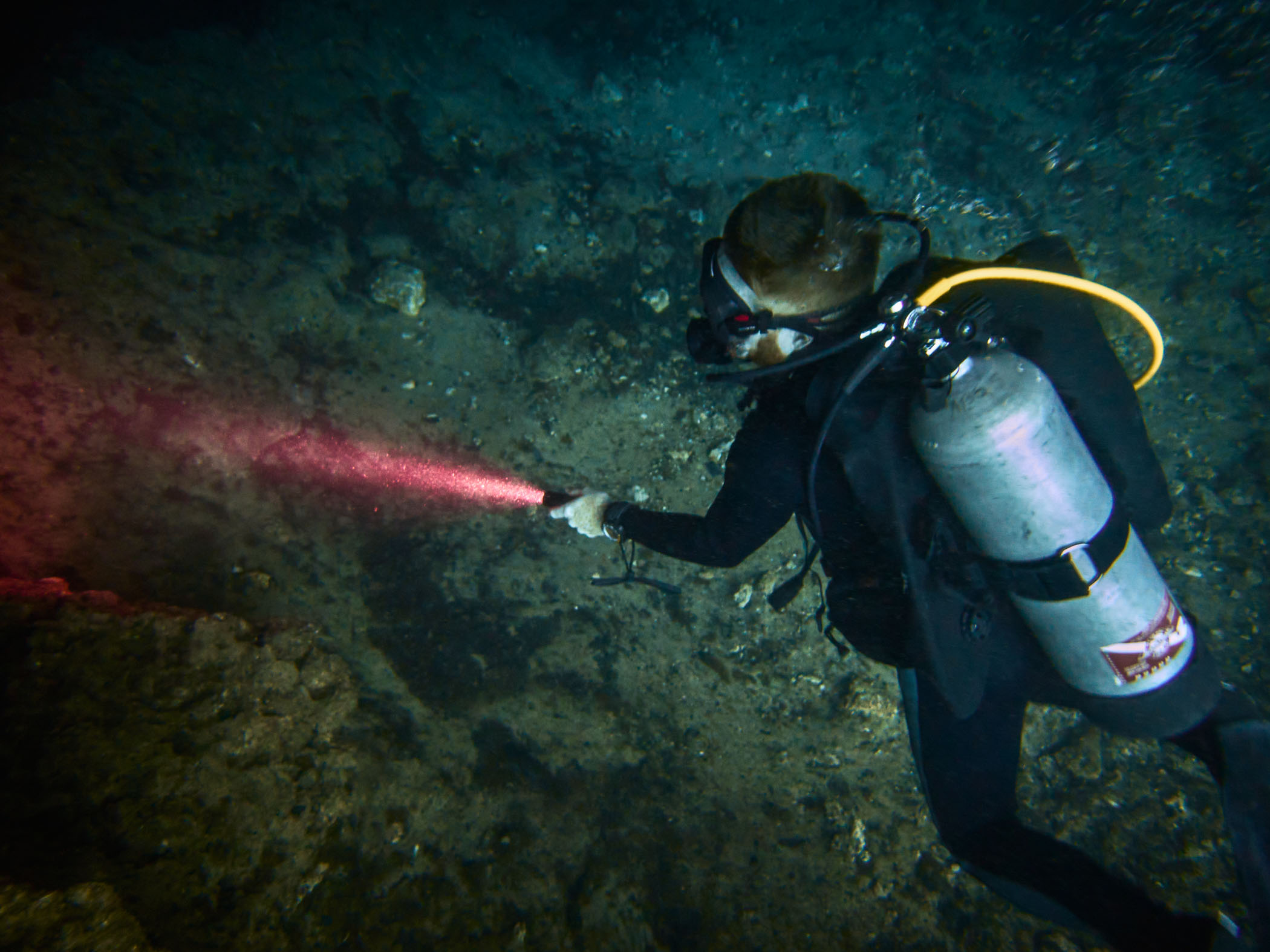
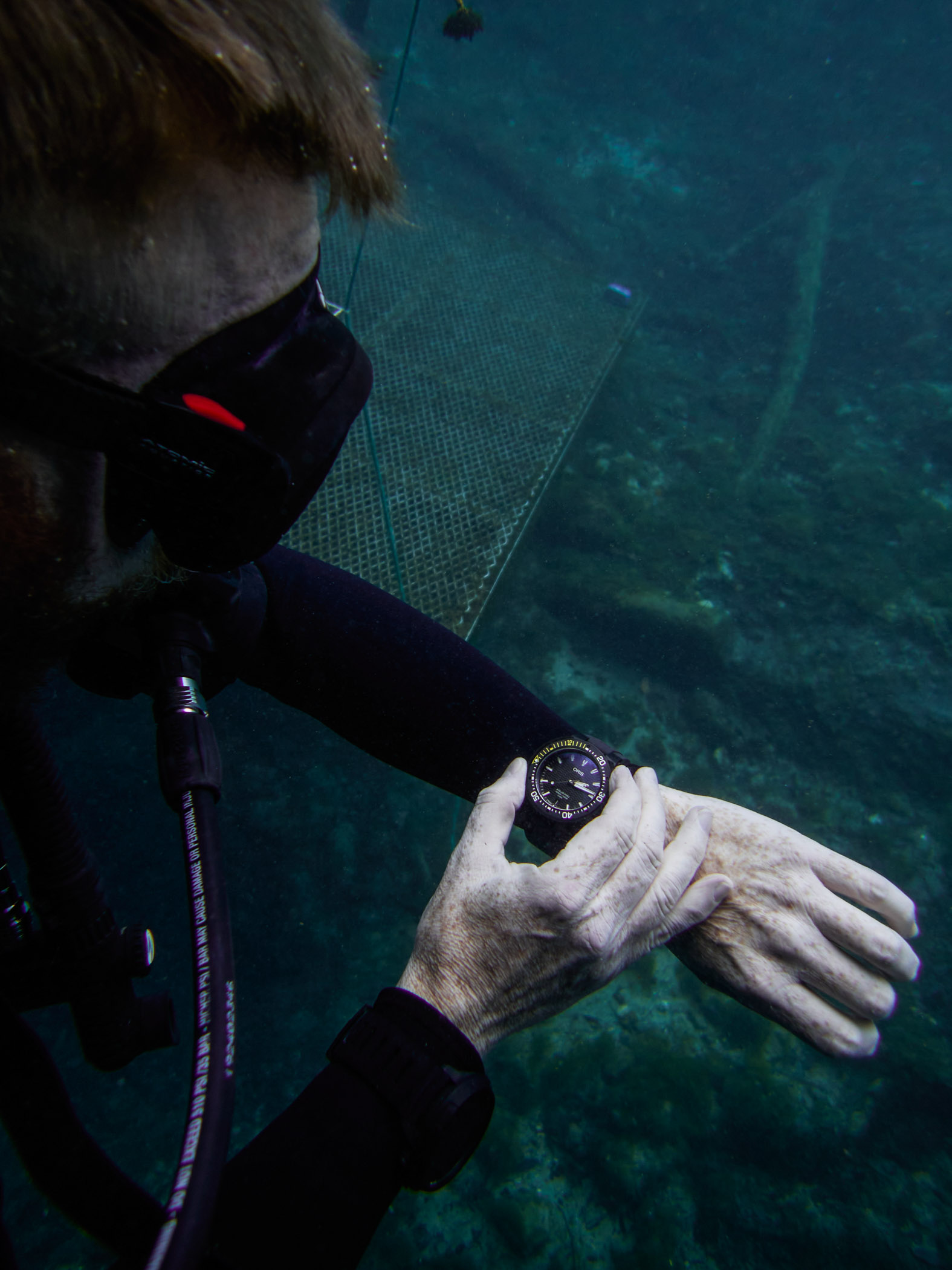
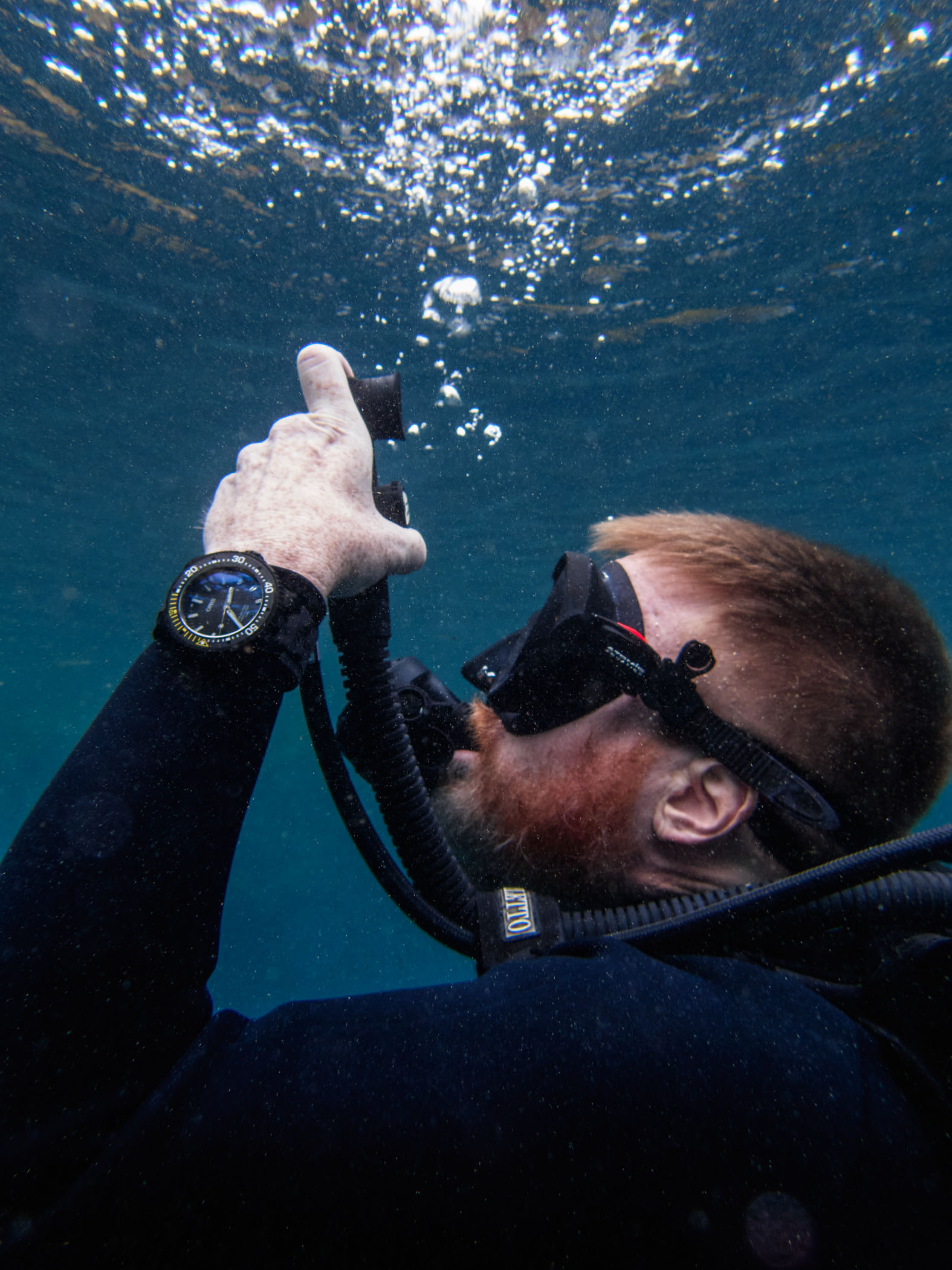

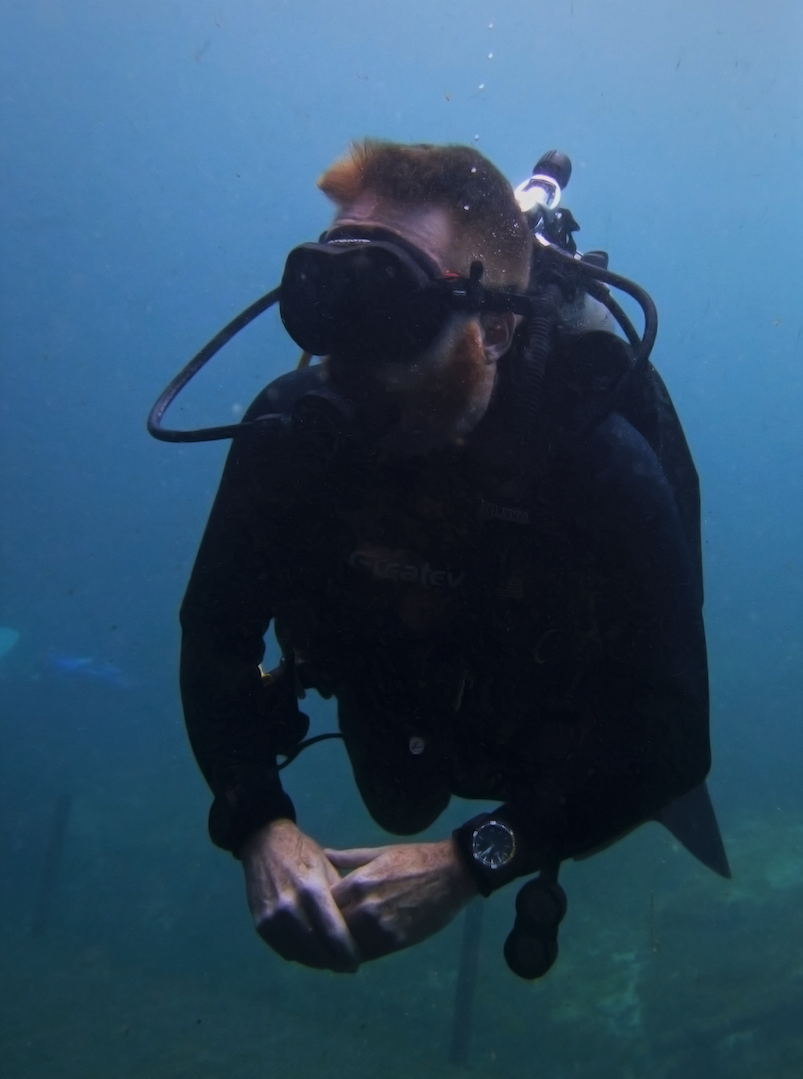




2 responses
Nice review, as a fellow recreational diver I enjoyed the read. It would have been nice to have a section covering alternatives in a similar price range.
Solid review, thanks 🙂 Remarkable: for me the strap is one of the great advantages, besides readability day ánd night and accuracy. It doesnt leave my (21 cm) wrist anymore other then with some weight-lifting excercises. Not all because I can adjust the length on-the-wrist. It always fits very comfortable. The extra length underneath the outer layer with clasp closed highly helps this fitting. Furthermore at night I absolutely love the depth and the illusion of spacing-away looking on-/into the strong illuminated dials and ring. I really do love this watch – after 22 years of sea-master (ab)use !! Kind regards 🙂 Ed.